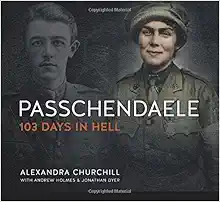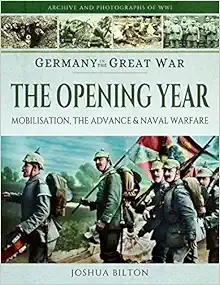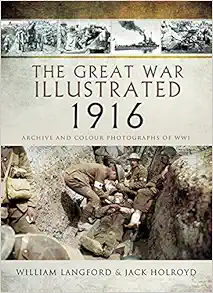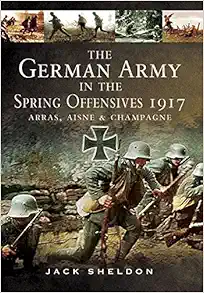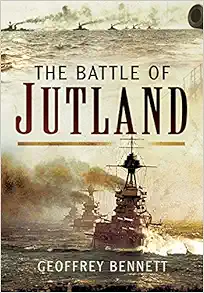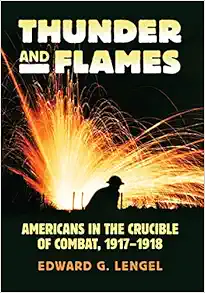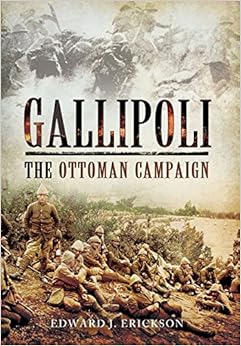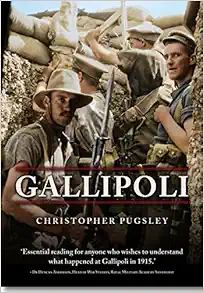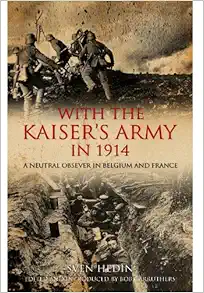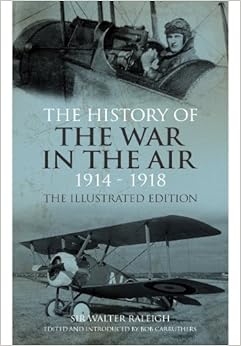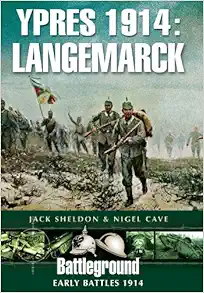The Deadly Consequences of WWI's Alliances
By Daniel McEwen
[November, 1918] With the signing of the armistice, German soldiers, hollow-eyed with battle fatigue and hunger, abandon their trenches and begin walking home from France four long years after Kaiser Wilhelm 2nd had boastfully promised them victory there within four months. Their dirty gray columns are escorted to the German border by squads of Allied troops who follow at a prearranged distance. Victor and vanquished alike, these men are among the lucky survivors of a war that had just killed 40 million men, women and children while also triggering the most momentous reset of the global order since the Fall of Rome.
Although the judgment of history is that Germany’s military leaders were most at fault in starting the war, there’s always been plenty of blame to go around. Fingers were also pointed at the two alliances that divided the six, The Triple Entente [Britain, France, Russia] and The Triple Alliance, a.k.a. the Central Powers Alliance [Germany Austro-Hungary, Italy]. The accusation is that rather than deter war as hoped, these alliances either obligated or enabled its members to join the fight, turning what should have been a small Balkan war into the first world war.
Mutual defense pacts have been around since war was invented and are almost a necessity for small nations as a deterrence against bigger, more powerful neighbors. The 31 member nations of NATO have kept Russia at bay for over 70 years. [Putin’s “special operation” in Ukraine has only reaffirmed the wisdom of forming the alliance.] But...deterrence only works when both sides are smart enough to be deterred. The nightmarish concept of Mutually Assured Destruction [MAD] has prevented nuclear war since the 1950’s because every adult on the planet knows whoever starts one dies too. But in July of 1914, no one was deterred by anyone’s military might. The entire German officer core, buoyed by its army’s mauling of France’s legions in 1870-71, was imbued with a contempt for its military. France’s marshals had such unswerving faith in French patriotic élan being able to triumph over any machine gun that they sent their soldiers into battle wearing bright red pants! Admirals of the Royal Navy salivated at the thought of trading salvos with the Imperial German Navy’s dreadnoughts and paid scant heed to its fleet of submarines. Newly-unified Italy was so eager to expand its borders at gunpoint it was the only one of the six nations to actually choose to enter the war.
Most WW1 historians will concede that the war as we know it would not have occurred if Serbian assassin Gavrillo Princep had not fired those “shots heard around the world”, that killed Austrian heir-apparent Archduke Franz Ferdinand in Sarajevo, Bosnia on June 28th, 1914. Extending that logic one step forward, would that assassination have started the war if those two alliances were not in place? Without Germany at its back, would the Austro-Hungarians have still attacked Serbia? Conversely, would the Germans have lit the fuse on the Schlieffen Plan if the Austro-Hungarians hadn’t supplied the match? Would Britain have sided with its Balkan rival Russia against Germany without the Entente? Would a million Russian serfs have died to preserve democracy in France if their czar had not joined the alliance?
It’s not like these alliances were chipped in stone. Rather, they were the end result of the previous half century of diplomatic square dancing that saw partners constantly changing in response to each others’ changing fortunes. France had its own side deal with Russia as a partner against Germany yet teamed up with Britain, to limit the czar’s influence in the Balkans. Britain and France were competing to build a global empire but their mutual mistrust of Berlin’s intentions kept their relationship cordial. Russia and Germany flirted but never held hands. Allies on paper, Austro-Hungary and Italy were rivals for dominance in the Balkans. All six were circling like vultures over the ailing Ottoman empire. In the end, each suffered a fate commensurate with their efforts to use one/both of these alliances to their nation’s advantage.
Britain [The Anguished Victor] – Although Britain’s isolationist parliament had serious qualms about sending troops to intervene in a bloody continental conflict, no party of any political stripe would have allowed a German victory over France to stand. Lamentably, the failure of the Asquith government to clearly communicate this fact to Berlin undermined the deterrent value of the Entente the one time it might actually have succeeded. For that patch of London fog, the bills were now coming due. WW1 collectively cost the nations that waged it approximately 3.5 trillion in today’s dollars.
To pay it’s share of that tab, Britain went from being the world's largest overseas investor to being its biggest debtor. “It wasn't simply that in 1916 America became the world's largest economy”, explains British historian Adam Tooze [The Deluge]. “She was also the war's banker. Wall Street paid for the battle of the Somme, and the US government bankrolled Passchendaele.” Interest payments on these war loans were gobbling up 40% of England’s annual budget! In fact, it’s been argued that these loans – not the German U-boats or Arthur Zimmerman’s Mexico telegram – were the real reason why America joined the war on the side of the allies. Washington feared that if the Allies lost the war, they would default on these massive war loans, not only crippling the US economy, but initiating a world-wide global financial crisis. And yet...within a decade, Britain had righted its financial ship and was back as a leader in international finance – and still is. Contrary to popular perception, "The Great War in no way inflicted ‘crippling economic damage’ on Britain,” argues economist Barnett Corelli [The Collapse of British Power]. “The war only ‘crippled’ the British psychologically." This wound proved much harder to heal.
Beguiled by the fiction of being “home by Christmas”, over million men answered their country’s call to arms in 1914. By war’s end, 6.1 million had fought for king and country. Nearly 900,000 were killed, another 1.5 million wounded, a casualty rate of about 2% - well below that of the other five nations. And, while it took them three and a half years to figure it out, British commanders were the first among the belligerents to perfect the combined-arms tactics [infantry, artillery, tanks and aircraft] that would ultimately end the trench stalemate. To its soldiers’ considerable credit, their last offensive of the war in late 1918 was the greatest series of victories in the British Army's history. Yet the record losses suffered in meat grinders like the Somme and Passchendaele lodged in the British psyche as the sacrifice of “the flower of a generation” by a criminally idiotic High Command. “Britons came to see The Great War as a conflict that had no clear cause, no moral justification and achieved absolutely nothing at all,” observes Cambridge University professor David Reynolds. However...having thought about it for a hundred years, the nation apparently had a change of heart. In 2014, then Prime Minister David Cameron declared; “WW1 was fought in a just cause; that our ancestors thought it would be bad to have a Prussian-dominated Europe.”
France [The Sore Winner] – In 1871, German Chancellor Otto von Bismarck’s unified armies had outmaneuvered and outfought the unprepared French forces into a costly surrender, claiming the tiny, twin provinces of Alsace and Lorraine as prizes for their trouble. Humiliated, France’s marshals retreated to the Grand Quartier Général and for the next forty years, focused their war planning exclusively on regaining these two slips of land the French public soon forgot about. Oblivious to the possibility of a German attack from the north, Plan XVII as they called it, was seriously flawed when it was delivered to field commanders just six months before the war broke out.
For starters, the marshals were convinced they’d lost in 1871 because they fought a defensive war and had converted to a faith in offense as the best defense. “Of all faults, inaction is the worst!” thundered the venerable Field Marshal Philip Petain. Then, when action was taken, his armies’ training manuals dictated that; “A successful attack depends in the last resort on the bravery, the energy and the persistence of the infantry” The first big test of the marshals’ offensive strategy came at Artois in December 1914 and inflicted 240,000 casualties before it ended in March of 1915 for a measly three kilometre gain. Officers were seen pistol-whipping their men to get them out of the trenches and up over the top. Over the next two years, the body count from similar failures years soared so high the army mutinied in 1917. A shaken Commander-in-Chief Joseph Joffre wisely chose to stand his armies down and wait for “the tanks and the Yanks”. When the war ended, France had fielded more men, fought more, longer battles than its closest ally the British, meeting greater disasters and suffering greater casualties – 4% of French soldiers were killed versus 2% of Britain’s. [And it never did take back Alsace and Lorraine, despite fighting a nasty mountain campaign that killed over 30,000 French soldiers, winning them instead in the Paris Peace Talks.]
Moreover, the 500 mile-long, “narrow band of congealed horror” known as The Western Front was located almost entirely within French borders. The multi-million shell barrages that were the hallmark of the war had inflicted nuclear-level damage on the French countryside, its industries and infrastructure. To make matters worse, Vladimir Lenin’s Bolsheviks had defaulted on the colossal loans the French treasury had made to finance construction of Russia’s railways. Ditto the bankrupt Serbs. “France remained industrially devastated and psychologically drained, no longer a great power but propped up by its colonial empire,” commented American historian Sally Marks.
So, when French Prime Minister Clemenceau demanded an eye-popping 20 billion gold marks in reparations from Germany, other world leaders were aghast. Overnight, the fiery Frenchman became the pariah of the Paris Peace Talks. Noted British economist John Maynard Keynes rushed home to publish a book full of charts and graphs that he said proved France’s demands were exorbitant, punitive and vindictive. Unphased, France stuck to its demands, even occupying parts of Germany, until Berlin grudgingly agreed in 1924 to pay 132 million gold marks in reparations. Fast forward to 1978. Sally Marks publishes her penetrating analysis of the true effects of the Treaty of Versailles, debunking Keynes’ assertions as pure myth-making. Based on half a century of actual, real-world numbers, she demonstrates that French demands were in fact justifiable, reasonable and affordable. Germany made its last payment of these reparations, [US]$94 million, on October 3rd 2010.
The war tore the guts out of France and no amount of reparations could soothe the pain. Having to bury over 1.3 million of its sons had so deeply scarred the nation’s soul that when the Germans again rolled into France in 1940, the government surrendered preemptively rather than have the country endure that level of pain once more.
Russia [The Biggest Casualty] – For as much as WW1 was a ‘Black Swan’ [an unpredictable catastrophe that seems inevitable only in hindsight], Russian serfdom was a ‘Grey Rhino’, [a highly probable, high impact yet neglected threat that occurs after a series of warnings and visible evidence, i.e. climate change] For the three hundred years it was ruled by Romanov czars, Russia was kept impoverished and antiquated, the country bumpkin of the European community. 90% of the population was condemned to to a life of destitution and despair as the property of the other 10%, the land-owning nobility. [African slaves toiling on American plantations lived longer, healthier lives than Russian serfs!]
The rage this unconscionable inequity engendered grew ever harder to suppress. In 1903, the czar’s troops were being called out to put down civil unrest about 300 times a year. By 1909, it was 300 times a day! That’s why, during the war with Japan in 1905, 300,000 imperial troops who might have turned the tide in Manchuria were instead suppressing domestic rebellions in Poland. The Tipping Point came when czar Nicholas 2nd threw his people under the bus of war in 1914. All the ominous warnings from his wisest ministers about blow-back on the home front come true.
1.4 million Russians soldiers are killed in the opening three months, Worse, 10 million of the rural population, caught between the scorched earth policy of their own retreating soldiers and the pillaging by the advancing German troops, have perished of malnutrition, cold or disease. Millions more await the same fate. Noblesse Oblige being a concept beyond the moral and intellectual grasp of Romanov czars, Nicholas remained unmoved by their suffering and that of the millions of his other sick, shivering subjects also starving to death in the cities. The war was grinding its deadly grist for a third year, when, as David Stone, Professor of Russian Studies at the United States War College put it; “All of the European powers are racing to collapse and the only question is who collapses first.” It was no contest.
One cold night in St. Petersburg, a peaceful crowd of women protesting their meagre wages and the lack of food to spend it on, gathers outside the czar’s winter palace. Continuing a longstanding family tradition, Nicholas orders his guards to open fire on unarmed subjects. The crowd scatters in panic, leaving the cobblestones heaped with bodies. The guards return to their barracks. Just another typical night in the capital city. And then...the incoherent rage of three centuries of injustice finds its voice. The crowd spontaneously returns to the street. “Let them shoot us, we are not going to quit!” they declare defiantly. The guards re-appear too, but guilt-ridden at having gunned down their own people, they tie red ribbons to their bayonets and embrace the protesters. Arm-in-arm, the cheering mass storms through the city, gathering recruits and momentum. The Russian Revolution has begun. When his train is stopped by rebellious soldiers, Nicholas goes quietly. The country goes wild.
For the next seven months, Russians enjoyed “a joyous, naive, disorderly carnival paradise” as newspapers, pamphlets, post cards and personal letters bubbled over with happy talk. “The revolution seemed like a wonderful holiday...for the first we were completely free”, “Russia has turned a new page in her history and inscribed on it ‘Freedom’” “The dazzling sun appeared” waxed a tabloid newspaper, “foul mists were dispersed. Great Russia stirred. The long-suffering people arose. The nightmare yoke fell. Freedom and happiness forward!” That “dazzling sun” did not shine for long.
Facing bankruptcy trying to conquer Russia militarily, Berlin had financed an exiled malcontent to defeat it covertly. With fiery speeches promising Peace, Bread, Land, Vladimir Lenin hi-jacks the revolution. In his memoirs, Leon Trotsky, Lenin’s closest lieutenant, recalled a meeting that illustrates why the Bolshevik’s take-over was so astonishingly easy. “The zemstvos [deputies] brought candles with them in case the Bolsheviki cut off the electricity and a vast number of sandwiches in case their food was taken from them. Thus democracy entered upon the struggle with dictatorship heavily armed with candles and sandwiches.”
After seizing power in a murderous political pogrom known as The Red Terror, Lenin delivers on just one of his three promises. The ruinous peace extracted by his German handlers enables him to redeploy what’s left of the army to an equally ruinous civil war. It will consume another 10 million Russians before it ends in 1921. Included in that toll are Nicholas, his wife and five children, murdered on Lenin’s order, their bodies dismembered, drenched with acid, set ablaze and dumped down a mine shaft. Thus ended the “white” tyranny of the 18 Romanov czars. The worst was yet to come.
Germany [The Undefeated Loser] - Not one of the one billion artillery shells estimated to have been fired in WW1 landed on German soil. And yet, those German soldiers walking back from France came home to a country as shell-shocked as they were. Working class Germans had never been in favor of the war. The longer it dragged on, the greater the hardships they had to endure, [at least 500,000 perished of malnutrition and related diseases], the closer the country inched towards a Russian-style revolution that would almost certainly purge the country’s elites, starting with its military.
Nevertheless, the jack-booted junta in Berlin that had been so eager to start the war could not bring itself to end it, fobbing the humiliation of conceding defeat off onto civilians. After all, what could they say? They’d commanded the finest army of the war yet their meticulously-planned offensives had failed spectacularly. The Schlieffen Plan in 1914, “the most ambitious offensive plan ever devised,” according to author Spencer Jones [Courage Without Glory], the Verdun death mill in 1916 and the Kaiserschlacht of 1918, last and largest offensive of the war, proved to be bridges too far, demanding “more of its soldiers than flesh and blood can deliver,” says Jones. Rather than admit two million German soldiers had died as victims of their mission creep, Eric Ludendorff and his cronies conjured up the ‘stab-in-the-back’ defense that his armies had been sabotaged politically before they could be defeated militarily. Few were taken in by such a craven alibi but among those who were, was an embittered corporal also sucking his thumb about the inconclusive armistice.
Austro-Hungary [The Punished Invader] - In the words of one of its poets, the Austro-Hungarian empire was, a “Joyful Apocalypse” of more than a dozen competing nationalities, cultures and languages, all vying for influence and all ruled over by Franz Joseph 1st, a kindly, 80-something emperor who gets an ‘A’ for effort in holding this fragile coalition together for as long as he did. But fractious Serbia was anything but joyful at being annexed into the empire in 1908. When ultra-nationalists waging a campaign of murder and mayhem to retrieve their independence, assassinate Archduke Ferdinand, heir to the Austrian throne, an exasperated Franz Joseph demands German protection from Russia while it “punishes” Serbia. His empire spent the least on defence of the six nations and its army hasn’t fought a major war in 30 years but as historian Norman Stone notes; “In Vienna there was always a large gap between ideas and reality.”
The “punishment” of Serbia instead punishes Franz Joseph’s under-equipped, under-trained and poorly-led divisions. 227,000 die without gaining an inch of Serbian ground. Add to that the 400,000 who are killed, wounded or captured fending off the Russian juggernaut that came charging to Serbia’s rescue. Only with massive German aid did the empire halt the czar’s army then and then again in 1916, this second time at the cost of over a million casualties. Franz Joseph dies but the killing his pride demanded goes on. High in the Alps, 173,000 are lost fighting the same battle over and over with the equally feeble Italians. At the eighth Battle of Vittorio Venento in 1918, 450,000 of the empire’s infantrymen simply down tools and walk off the job. The various ethnic minorities, starting with the Czechs, Hungarians, Croats, Romanians, Slovenes and Serbs, tear the carcass of the empire apart like ravening lions, creating 13 new states. [FYI: Serbia was punished. It suffered the greatest per capita population loss of any of the war’s thirty combatant nations. 1.1 million inhabitants out of the 4.5 million pre-war populace were gone, a staggering 28% of the population, a loss that still haunts the nation emotionally and demographically.]
Italy [The Fickle Ally] - The only one of the six to switch sides, Italy auctioned off the lives of its soldiers to the highest bidder. It was not attacked and its a mutual-defense pact with Austro-Hungary and Germany obligated it to join them only if either of its partner nations was attacked. And this was the loophole its government jumped through. Without ever firing a shot on their behalf, Italy abandoned its two allies, claiming they were doing the attacking. Declaring neutrality in 1915, the opportunists in Rome went sniffing around for a better deal and found the Entente promising more territory than either Berlin or Vienna.
Tragically for it’s soldiers, Italy fielded one of the most incompetent fighting forces in modern European history. Fighting with antiquated weapons and tactics, its under-clothed, under-fed armies under the tyrannical command of Marshal Luigi Cadorna lost 12 battles on the Isonzo River in two years at the cost of 645,00 casualties. The rout at the Battle of Caporetto in the Autumn of 1918 saw a further 300,00 Italians mowed down like ripe wheat. More alarming to the government in Rome, an additional 350,000 more had promptly surrendered! After a long-overdue shake-up of the military leadership, and with British and American troops joining them, the Italian’s rallied at Vittorio Veneto, albeit because the war-weary Austro-Hungarians surrendered rather than fight.
Flushed with this victory, Italian Prime Minister Vittorio Orlando and Foreign Minister Sidney Sonnino set off for the Paris Peace Talks, expecting to collect the goodies the Entente had promised. They got a frosty reception instead. The British and French delegations were adamant that Italy had not honored the terms of their agreement on land or sea and relied too much on Entente forces to do the heavy lifting. Months of public theatrics earned Orlando and Sonnino only the port city of Trieste and a measly share of the German reparations. The nation was outraged. Right wing poet Gabriel D’Annunzio denounced the deal as a; “mutilated victory, transubstantiating a victory into a disaster.” This perceived slap in the face insulted Italians’ burgeoning national pride, becoming an issue a posturing dandy named Benito Mussolini would inflame on his march to power.
World War 2 makes it difficult to reflect on World War 1 objectively, but even when it was known by its maiden name, The Great War, too many people had made too many mistakes wasting too many lives for such an inglorious, indecisive and indefensible conflict to sit well with either the winners or the losers. As for the alliances’ culpability, the lesson WW1 teaches is that an alliance is only as strong as the character of those charged with honoring it. - [danielcmcewen@gmail.com
| * * * |
Show Notes
| * * * |
© 2025 Daniel McEwen
Written by Michael Stroud. If you have questions or comments on this article, please contact Michael Stroud at: mgstroud@me.com.
About the author:
Michael G. Stroud is a passionate and dedicated military historian that researches and writes about all eras of military history from ancient to modern times. As a regular LinkedIn contributor, he contributes diverse and interesting military history pieces via websites, scholarly journals, and print magazines and his currently working on a book about England’s rise to naval supremacy. He lives in a small town in Michigan with his wife.
* Views expressed by contributors are their own and do not necessarily represent those of MilitaryHistoryOnline.com.


